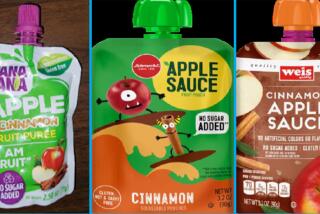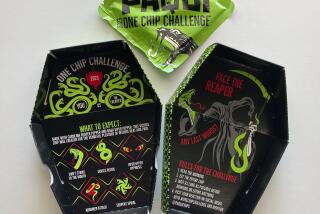The cinnamon challenge: Just say no, pediatricians warn
It seems harmless enough, swallowing a little spoonful of a lovely spice like cinnamon, but the so-called cinnamon challenge, as millions of YouTube viewers know, is not a pleasant gustatory experience.
In clip after clip on the Internet, someone — often a teenager — ingests a tablespoon of the stuff, without drinking fluids, within 60 seconds. A burning sensation triggers the gag reflex. Coughing and sputtering ensues. A cloud of brown powder surges toward the camera.
Most people who try it recover quickly. But in a handful of unlucky cases, researchers from the University of Miami wrote for publication Monday in the journal Pediatrics, kids end up in the hospital with coughing, vomiting, nosebleed or chest tightness.
“The health risks of the challenge are relatively low, [but] they are unnecessary and avoidable,” wrote coauthors Dr. Steven E. Lipschultz, Dr. Judy Schaechter and Amelia Grant Alfieri in a perspective article advising pediatricians and parents to talk with teens about the possible harmful effects of taking the dare.
Cinnamon is made up of cellulose fibers that do not biodegrade in the lungs, the authors reported. The risk of ingesting it in a quantity as great as a tablespoon is that some of the powder ends up being inhaled into the lungs, where it can cause inflammation or, in severe cases, pneumonia. People with pulmonary diseases may be at particular risk for complications. Cinnamon can trigger asthma attacks in people who are allergic to the spice.
The team didn’t find any studies of the effects in people of inhaling the spice, but they did cite studies in rats, which showed that a single dose of inhaled cellulose dust could bring on mild inflammation at first and more serious effects, including scarring in the lungs, as time passed.
The team blamed the cinnamon challenge’s popularity on the exposure it has gotten on the Internet — the phenomenon received 2.4 million Google hits in the first half of 2012 alone, they said — and urged parents and doctors to step in.
“Given the allure of social media, peer pressure, and a trendy new fad, pediatricians and parents have a ‘challenge’ of their own in counseling tweens and teens regarding the sensibilities of the choices they make,” they wrote.







